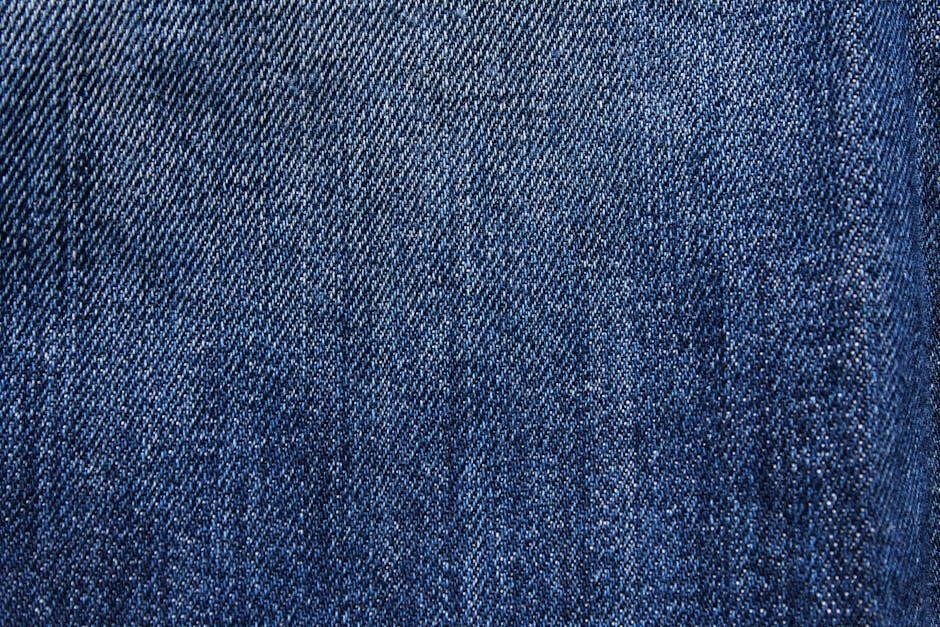This guide provides a comprehensive overview of how to accurately identify different types of threads found on fasteners, fittings, and other mechanical components. Correctly identifying a thread is essential for selecting compatible parts, ensuring proper functionality, and maintaining the integrity of mechanical systems.
Thread identification is a crucial skill in various fields, including engineering, manufacturing, plumbing, and even DIY projects. It involves accurately determining the specifications of a thread, such as its type, size, pitch, and form. This knowledge is essential for selecting the correct fasteners, fittings, and tools for specific applications.
Improper thread identification can lead to mismatched components, compromised connections, and potential damage to equipment. For instance, using the wrong thread type could result in leaks in a plumbing system or a weakened connection in a mechanical assembly. Therefore, understanding the fundamentals of thread identification is paramount for ensuring safety, reliability, and efficiency.
This guide aims to provide a step-by-step approach to thread identification, covering essential terminology, measurement techniques, and common thread standards. Whether you are a seasoned professional or a beginner, this resource will equip you with the knowledge and skills necessary to confidently identify threads in various applications. By mastering thread identification, you can avoid costly mistakes, improve the quality of your work, and ensure the proper functioning of threaded connections.

Understanding Thread Terminology
Before diving into the process of thread identification, it’s essential to grasp the fundamental terminology associated with threads. This section defines key terms that will be used throughout this guide, providing a solid foundation for understanding thread specifications and measurements. Familiarizing yourself with these terms will greatly simplify the identification process and prevent confusion.
Major Diameter: The largest diameter of a thread, measured from crest to crest. Minor Diameter: The smallest diameter of a thread, measured from root to root. Pitch: The distance between adjacent thread crests, typically measured in millimeters (mm) for metric threads or threads per inch (TPI) for inch threads. Thread Angle: The angle between the sides of the thread, often 60 degrees for Unified and Metric threads.
Crest: The outermost tip of a thread. Root: The innermost part of a thread, located at the bottom of the groove. Thread Form: The shape of the thread profile, such as V-thread, trapezoidal, or square. Nominal Size: The designated size of a thread, often expressed as a fraction or a metric designation (e.g., 1/8 NPT or M14x1.5). Understanding these basic terms is crucial for accurate thread identification.
Step 1: Determining Thread Type (Tapered vs. Parallel)
The first step in identifying a thread is determining whether it is tapered or parallel (straight). This distinction is crucial because it significantly narrows down the possible thread types. Tapered threads are designed to create a seal as they are tightened, while parallel threads require a separate sealing mechanism, such as an O-ring or sealant.
Visual Inspection: Examine the thread closely. Tapered threads will visibly narrow along their length, whereas parallel threads will maintain a consistent diameter. Straight Edge Test: Place a straight edge along the thread. If there is a gap between the straight edge and the thread as you move along its length, it is likely a tapered thread. A parallel thread will have consistent contact with the straight edge.
Understanding this initial distinction is vital for accurate thread identification. Tapered threads are commonly found in pipe fittings where a pressure-tight seal is required. Parallel threads, on the other hand, are often used in mechanical connections where precise alignment and controlled tightening are important. This step simplifies the identification process significantly.
Step 2: Measuring Thread Pitch
Once you’ve determined whether the thread is tapered or parallel, the next step is to measure the thread pitch. Thread pitch refers to the distance between adjacent thread crests, or the number of threads per inch (TPI). Measuring thread pitch is crucial for distinguishing between different thread standards, such as metric and imperial threads.
Using a Thread Pitch Gauge: The most accurate way to measure thread pitch is by using a thread pitch gauge. This tool consists of a set of blades with different thread pitches. Simply match the blades to the thread until you find one that fits snugly without any gaps;

Measuring Threads Per Inch (TPI): For imperial threads, you can count the number of threads within a one-inch span. This is best done using a ruler or caliper with fine measurement capabilities. Align the ruler along the thread and count how many threads fall within the one-inch mark.
Measuring Pitch in Millimeters (mm): For metric threads, measure the distance between two adjacent thread crests in millimeters using a caliper. Ensure the caliper is aligned correctly to get an accurate measurement. Knowing the thread pitch is crucial for proper identification.
Step 3: Measuring Thread Diameter
After determining the thread type (tapered or parallel) and measuring the thread pitch, the next crucial step in thread identification is measuring the thread diameter. This measurement helps narrow down the possibilities and identify the specific thread size. There are two main diameters to consider: the major diameter and the minor diameter.
Measuring the Major Diameter: The major diameter is the largest diameter of the thread, measured from crest to crest. Use a caliper or micrometer to measure this distance accurately. Ensure that the jaws of the caliper are perpendicular to the thread axis for the most precise reading. This measurement is typically given in inches or millimeters, depending on the thread standard.
Measuring the Minor Diameter: The minor diameter is the smallest diameter of the thread, measured from root to root. While it’s less commonly used for initial identification, it can be helpful in confirming the thread type, especially when dealing with damaged or worn threads.
Nominal Diameter: After measuring the major diameter, compare your measurement to standard thread charts. These charts list the nominal diameter, which is the designated size of the thread.
Step 4: Identifying Thread Angle
Identifying the thread angle is a critical step in accurately determining the thread type. The thread angle is the angle formed between the sides of the thread. Different thread standards, such as Unified National (UNC/UNF) and Metric, have specific thread angles. This step often requires a keen eye and specialized tools, but it’s essential for precise thread identification.
Using a Thread Angle Gauge: A thread angle gauge, or screw pitch gauge, can be used to determine the thread angle. These gauges consist of a series of thin blades, each with a different angle. To use the gauge, hold the blades against the thread until you find one that fits snugly into the thread profile without any gaps.
Comparing to Known Standards: Once you’ve determined the thread angle, compare it to known thread standards. Unified National threads typically have a 60-degree angle, while Acme threads have a 29-degree angle. Metric threads also typically have a 60-degree angle. Thread identification charts often include thread angles as a reference.
Visual Inspection: In some cases, you can estimate the thread angle through visual inspection.
Using Thread Identification Charts
Thread identification charts are invaluable tools for accurately identifying thread types. These charts compile crucial thread specifications, such as major diameter, pitch, threads per inch (TPI), and thread angle, for various standards like Unified National (UNC/UNF), Metric, NPT, and others. Utilizing these charts simplifies the identification process and reduces the risk of errors.
Understanding Chart Layout: Typically, thread identification charts are organized by thread standard (e.g., UNC, UNF, Metric) and then further categorized by nominal size or diameter. Each row provides the corresponding pitch, TPI, major diameter, and sometimes the thread angle for that specific thread. Some charts also include visual representations of thread profiles for quick reference.
Cross-Referencing Measurements: After measuring the thread’s major diameter, pitch, and identifying its form (tapered or parallel), use the thread identification chart to cross-reference these measurements. Look for a thread size on the chart that matches the dimensions you’ve obtained. Be sure to verify multiple parameters to confirm a match.
Online Resources: Numerous online resources provide digital thread identification charts that can be accessed via computer or mobile device. These resources often offer enhanced features like zoom functions, interactive tools, and the ability to filter by specific criteria.
Common Thread Types and Their Applications
Understanding common thread types and their specific applications is crucial for selecting the appropriate fasteners and fittings in various industries. Each thread type is designed with distinct characteristics that make it suitable for particular purposes, ensuring optimal performance and reliability.
Unified National Coarse (UNC): UNC threads are widely used for general-purpose fastening applications. Their coarser pitch provides greater strength and resistance to stripping, making them suitable for applications where frequent assembly and disassembly are not required. Common applications include bolts, screws, and nuts in construction, automotive, and machinery.

Unified National Fine (UNF): UNF threads have a finer pitch than UNC threads, offering greater tensile strength and more precise adjustments. They are preferred in applications where vibration resistance and tighter seals are necessary, such as aerospace, electronics, and precision instruments.

Metric Threads (M): Metric threads are the international standard, used extensively in Europe and Asia. Like UNC and UNF, metric threads come in coarse and fine pitches, designated by an “M” followed by the diameter and pitch (e.g., M8x1.25). Metric threads are found in a wide array of applications, from automotive to electronics.
National Pipe Thread (NPT): NPT threads are tapered threads used to create a pressure-tight seal in plumbing and pipe fittings. The tapered design ensures a secure connection that prevents leaks, making them essential in fluid and gas systems.
Specialized Thread Types and Features
Beyond the common thread types, several specialized threads are designed for specific applications requiring unique features and performance characteristics. These specialized threads often incorporate distinct geometries, materials, or coatings to meet stringent demands in various industries.
Acme Threads: Acme threads are trapezoidal threads primarily used for power transmission rather than fastening. Their shape allows for smooth and efficient movement, making them ideal for lead screws, jacks, and other applications requiring linear motion. Acme threads provide a larger contact area, reducing wear and increasing load-carrying capacity.
Buttress Threads: Buttress threads are designed to handle extreme axial loads in one direction. Their asymmetrical shape, with a steep load-bearing flank and a shallow trailing flank, provides exceptional strength and stability under heavy loads. Buttress threads are commonly used in artillery breeches, hydraulic presses, and other high-force applications.
Left-Hand Threads: Left-hand threads tighten in the opposite direction of standard right-hand threads. They are used in applications where vibration or rotation might cause a right-hand thread to loosen, such as on bicycle pedals or fan blades. Left-hand threads prevent unintended loosening and ensure secure operation.
Self-Locking Threads: Self-locking threads incorporate features that prevent loosening under vibration or dynamic loads. These features may include nylon inserts, serrated flanges, or chemical locking compounds that increase friction and resist loosening. Self-locking threads are used in critical applications where fastener security is paramount, such as in aircraft, automotive, and machinery.



